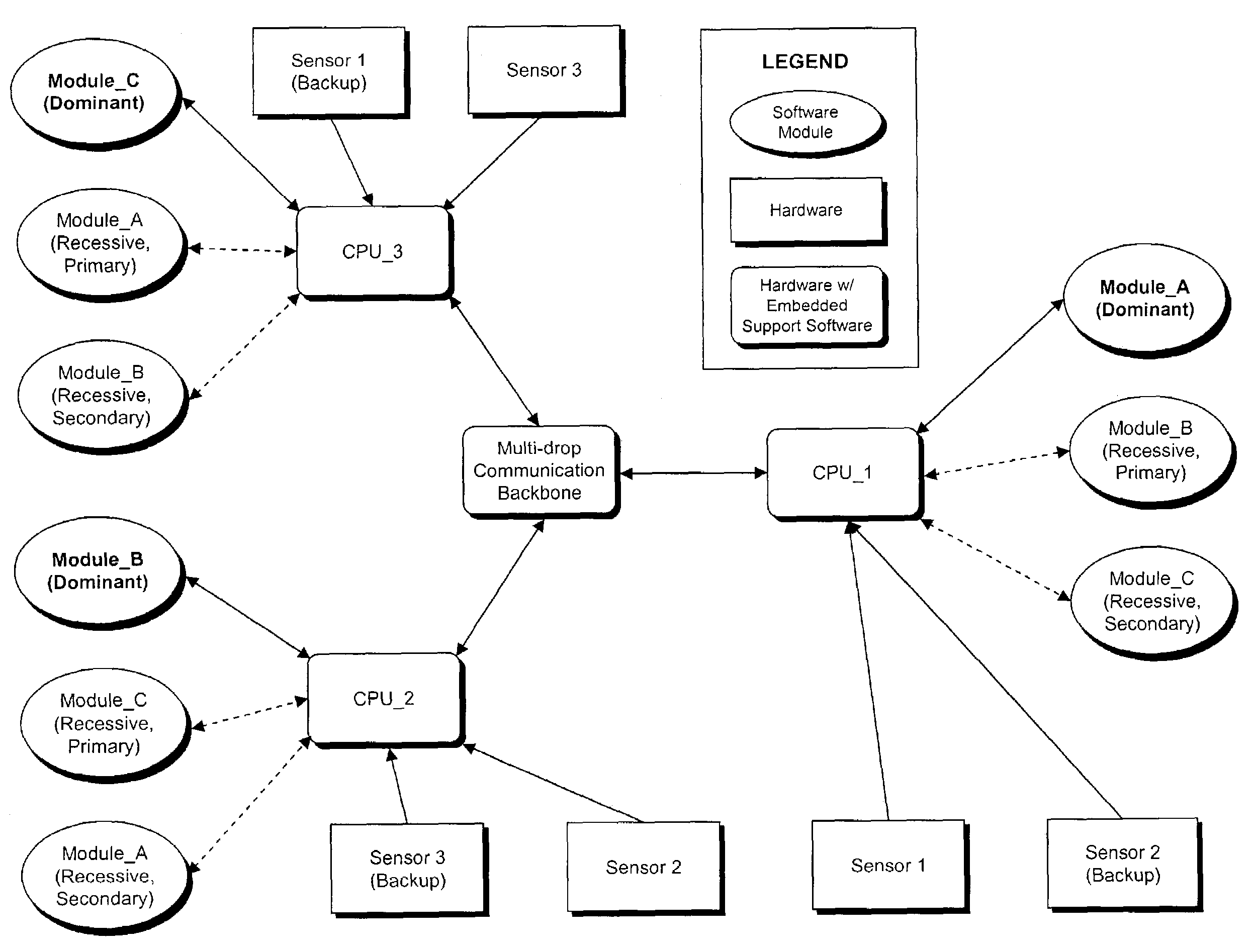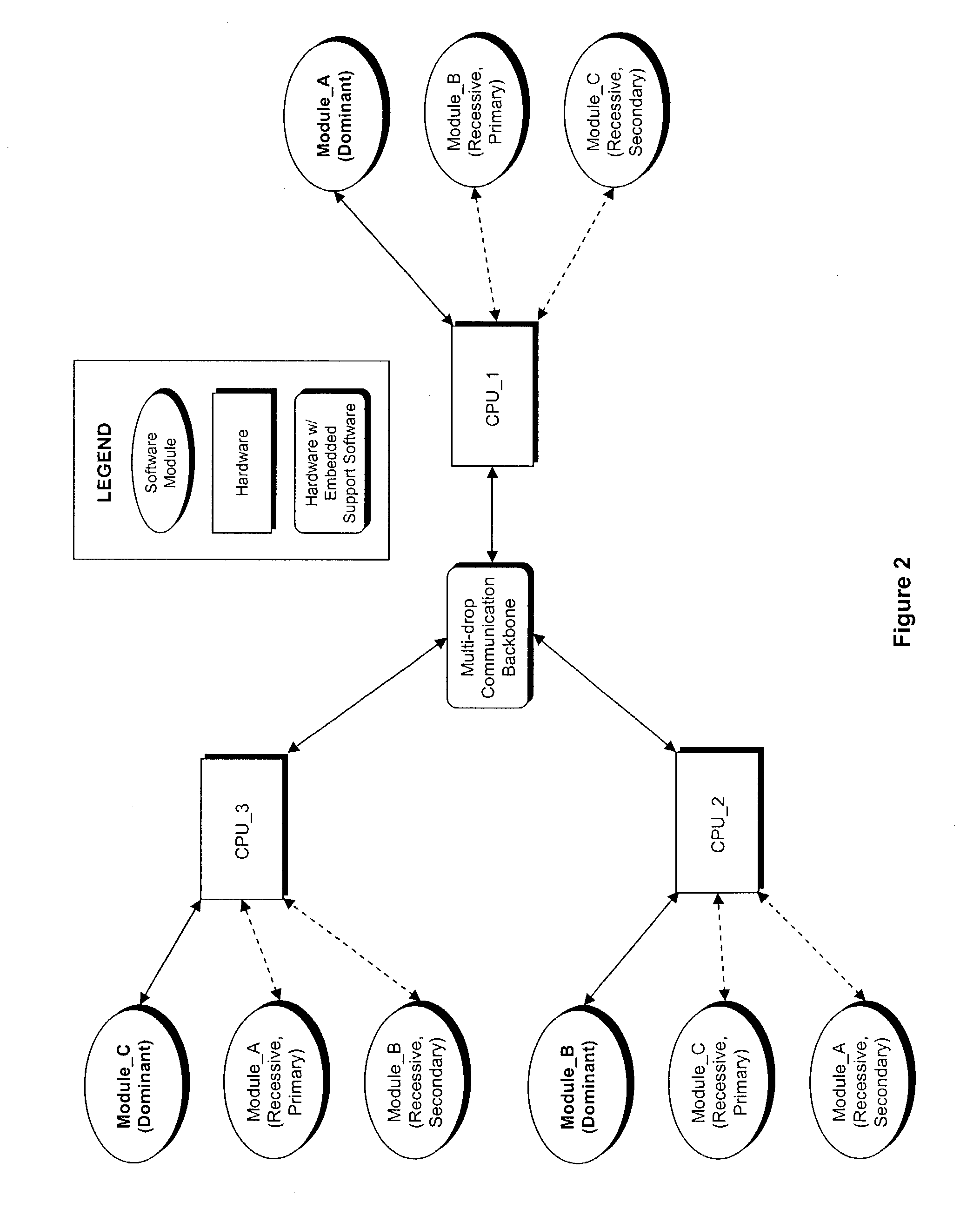Practical, redundant, failure-tolerant, self-reconfiguring embedded system architecture
- Summary
- Abstract
- Description
- Claims
- Application Information
AI Technical Summary
Benefits of technology
Problems solved by technology
Method used
Image
Examples
Embodiment Construction
Configuration of a Basic System
[0017]The system assumes a hardware architecture that supports distributed computing via a set of processors connected to a multi-drop communication backbone (i.e. Ethernet or RS485). Although a homogeneous set of processors is assumed, homogeneity is not a requirement and a heterogeneous set of processors can be accommodated. FIG. 1 illustrates a simple system configuration with all of the essential elements. The system consists of two processors, 101 and 102, connected to a communication backbone 103 and two software modules, 104 and 105. A copy of each software module, 106 and 107, resides on each processor, but one copy of each is designated as either ‘Dominant’ or ‘Recessive’ depending on which processor it resides on.
Operation of Software Module Redundancy
[0018]All modules monitor the communication backbone data traffic, looking for a circulating message containing a representation of the current functional state of all modules in the system, cal...
PUM
 Login to View More
Login to View More Abstract
Description
Claims
Application Information
 Login to View More
Login to View More - R&D
- Intellectual Property
- Life Sciences
- Materials
- Tech Scout
- Unparalleled Data Quality
- Higher Quality Content
- 60% Fewer Hallucinations
Browse by: Latest US Patents, China's latest patents, Technical Efficacy Thesaurus, Application Domain, Technology Topic, Popular Technical Reports.
© 2025 PatSnap. All rights reserved.Legal|Privacy policy|Modern Slavery Act Transparency Statement|Sitemap|About US| Contact US: help@patsnap.com



